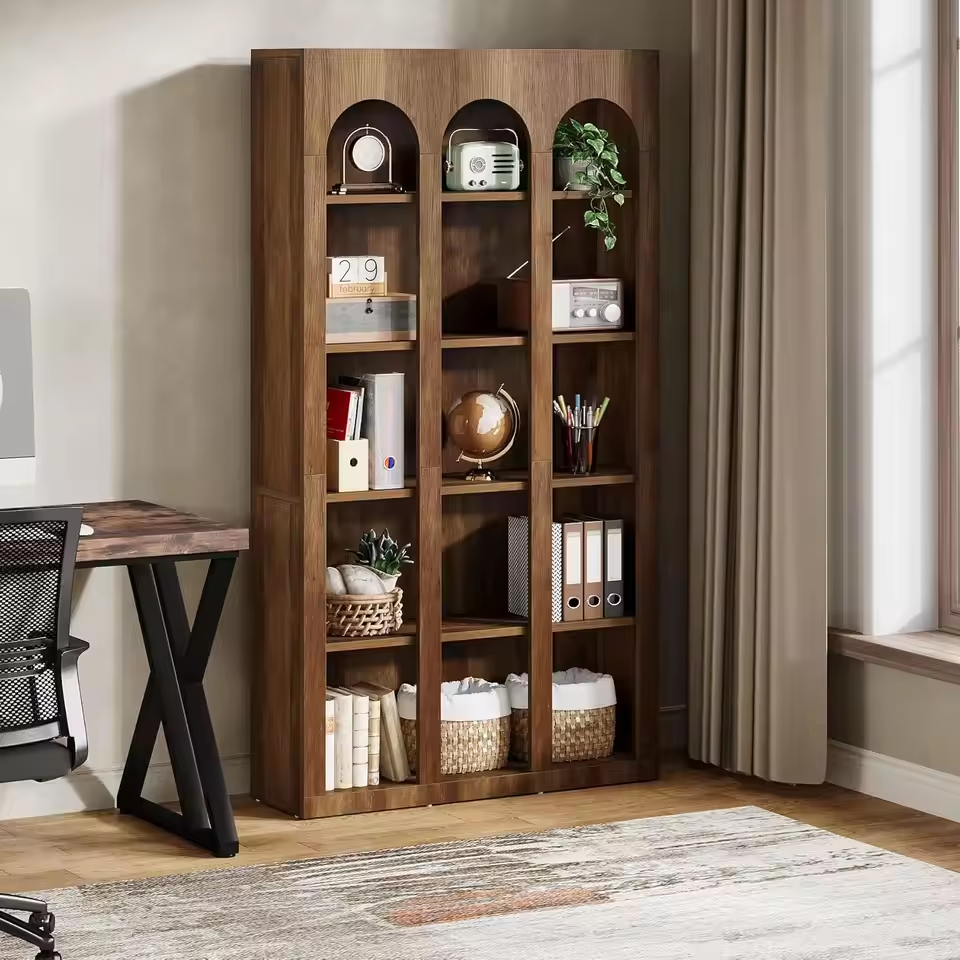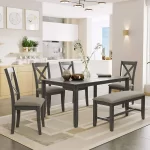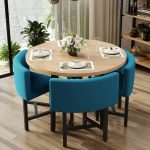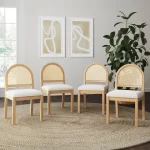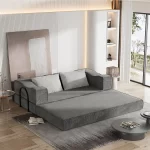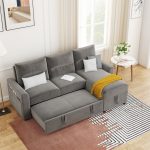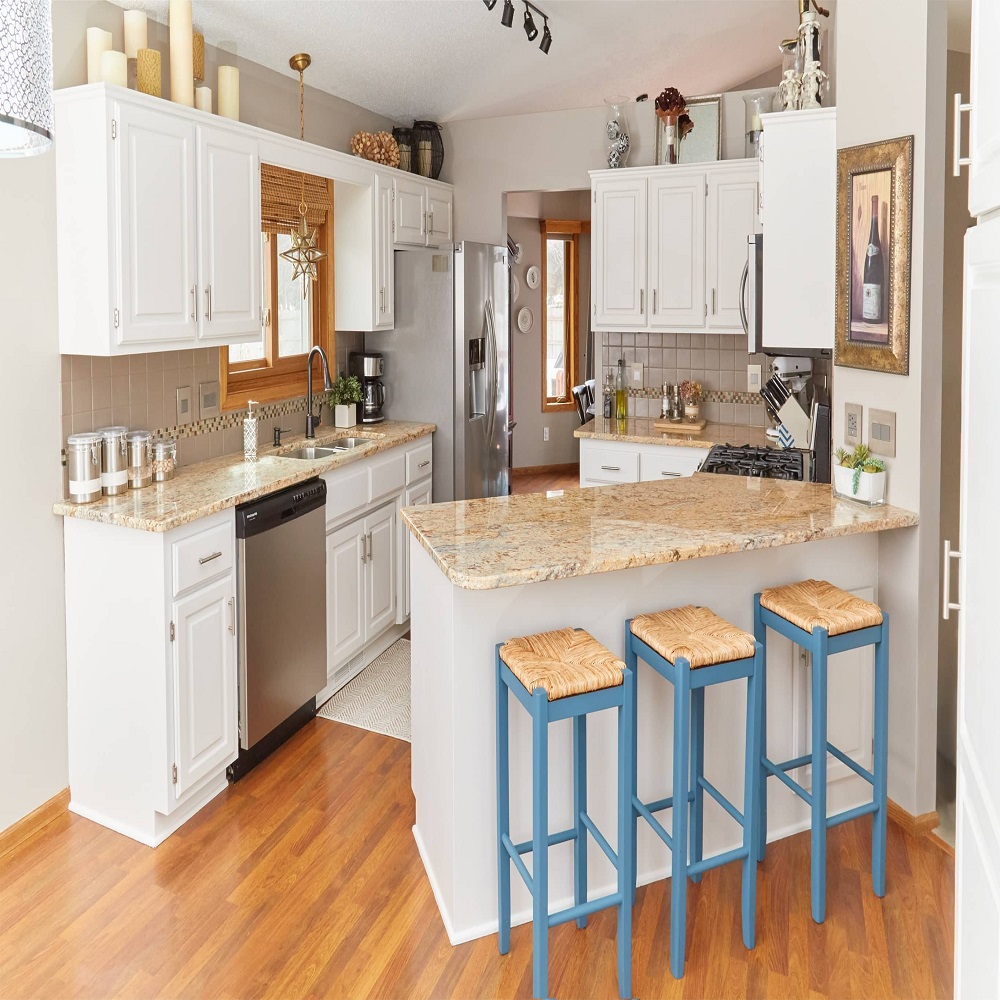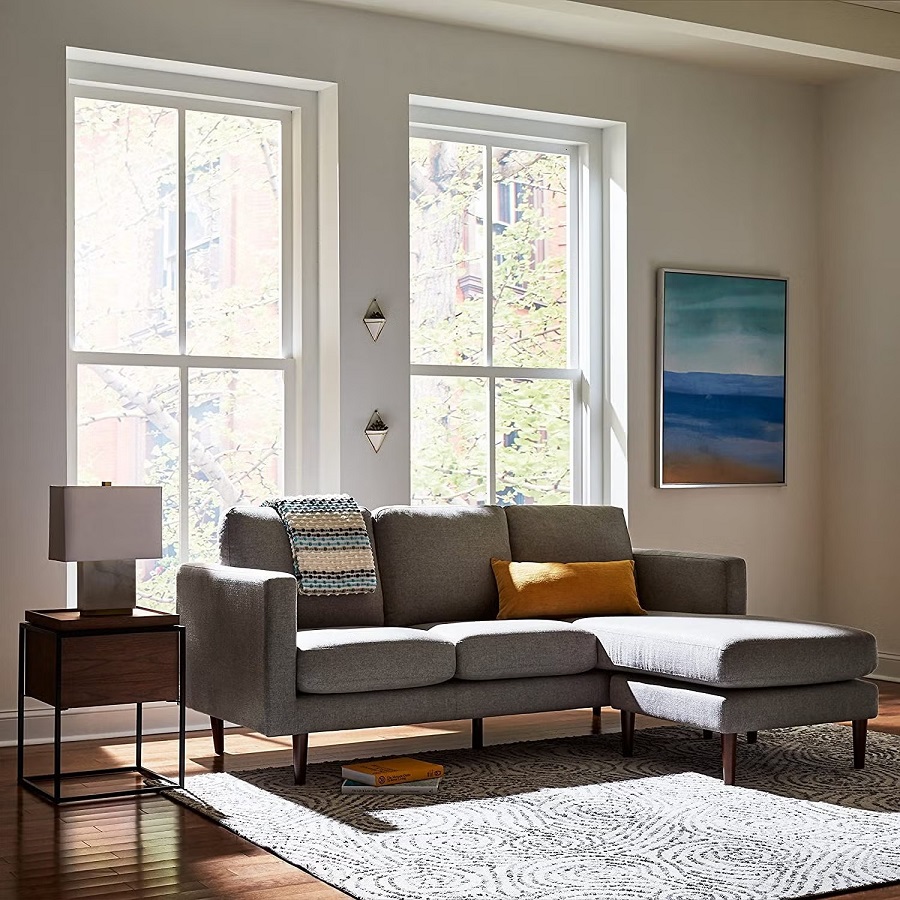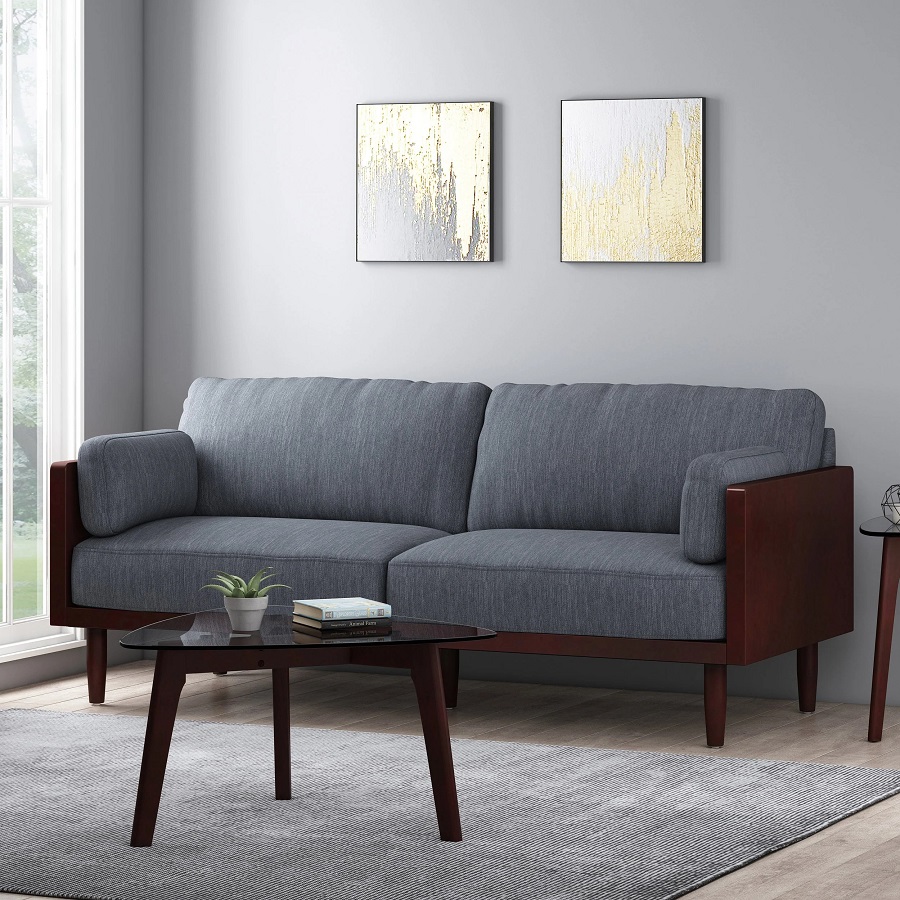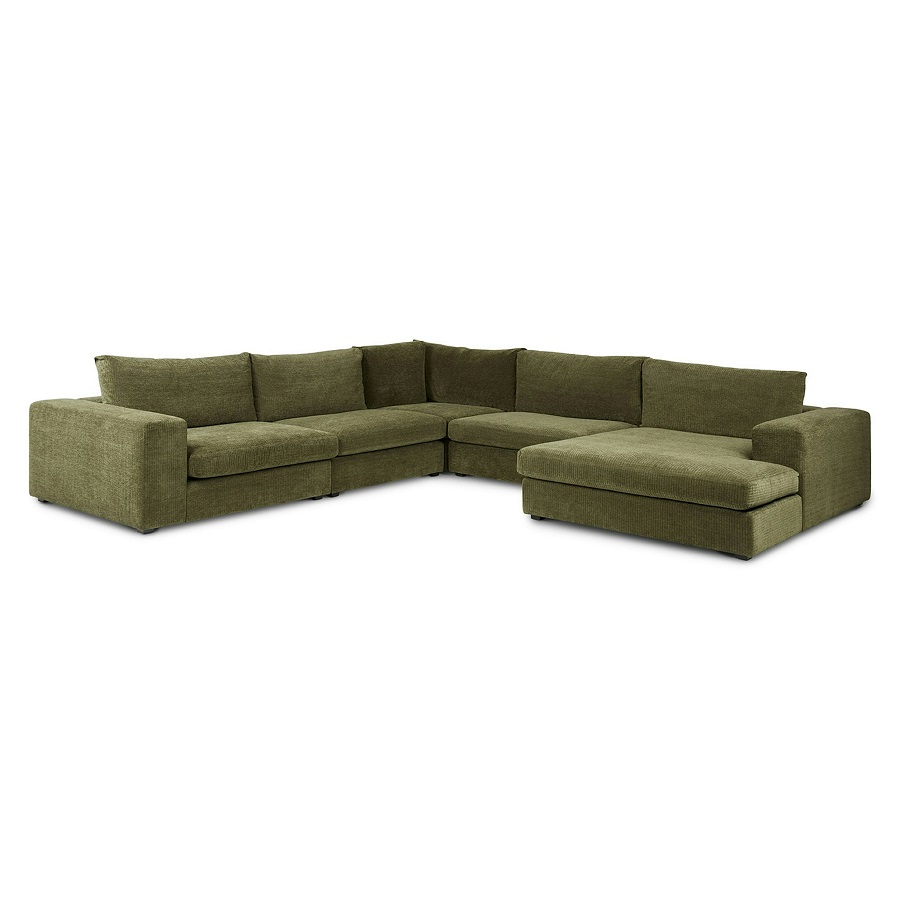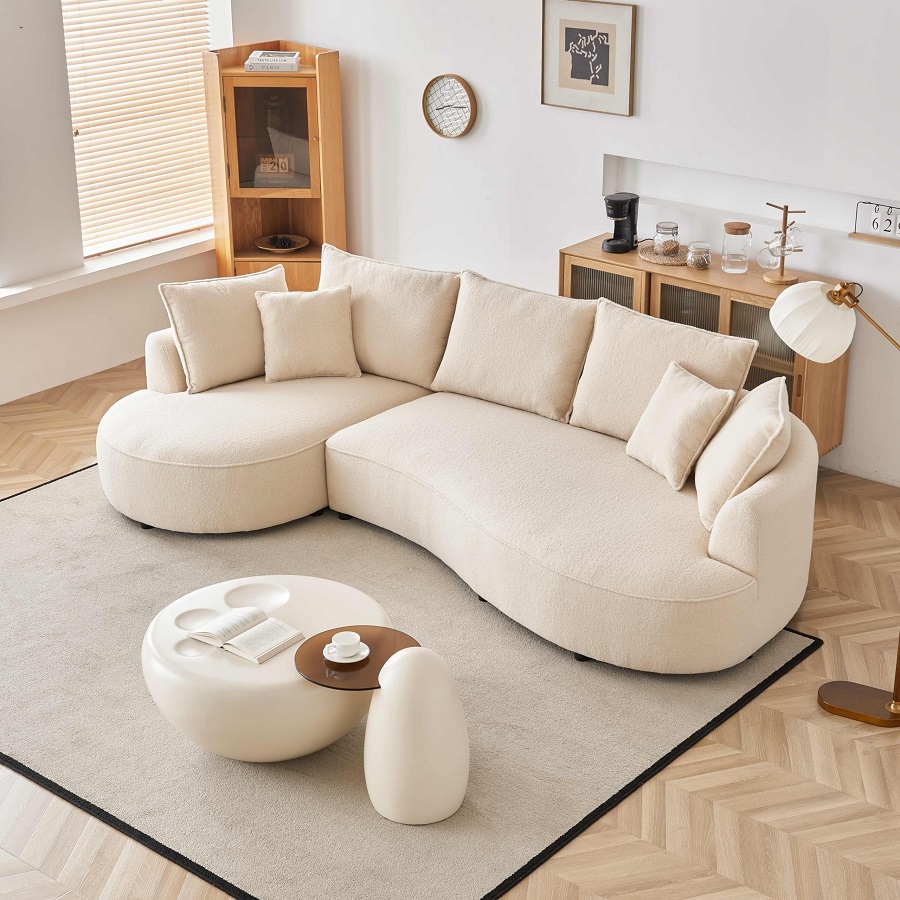Introduction to Painted Cabinet Woods
Choosing the best wood for painted cabinets is key to achieving a flawless finish. For painted surfaces, woods with smooth surfaces and minimal grain work best. These types of wood ensure the paint coats evenly, providing a professional, sleek look to your kitchen cabinets. It’s not just about aesthetics though; certain woods also offer durability and longevity, ensuring your cabinets withstand the test of time. As we explore various options, consider qualities like grain patterns, hardness, and how well the wood holds paint. Join us as we delve into the top contenders for beautifully painted cabinetry in 2025.
Maple Painted Cabinets: The Ideal Choice for Smooth Finishes
When choosing the best wood for painted cabinets, maple stands out for its smooth finishes. Maple is a hardwood that provides both durability and a refined grain, which ensures a sleek appearance after painting. Its subtle grain pattern means it doesn’t show through paint, delivering an even and consistent surface. Moreover, the wood’s natural light color enhances the brightness of your kitchen when coated with a fresh layer of paint.
Maple cabinets work well for modern kitchen designs that require a clear, clean look. As one of the hardest woods available, maple resists scratches and dents, maintaining its pristine condition even under frequent use. This hardness also results in a longer lifespan for your cabinets, making it a smart investment for your home.
Another advantage of maple is its versatility. It can be used in both traditional and contemporary settings, adapting well to various styles with the right paint color and finish. For those seeking a high-quality, long-lasting option, maple painted cabinets are an excellent choice that balances beauty with functionality.
In conclusion, maple wood’s smooth surface, uniform grain, and lasting durability make it the ideal choice for painted kitchen cabinets. This noteworthy wood ensures your cabinetry will exhibit flawless finishes that stand the test of time, embodying both practicality and sophistication in your kitchen remodel.
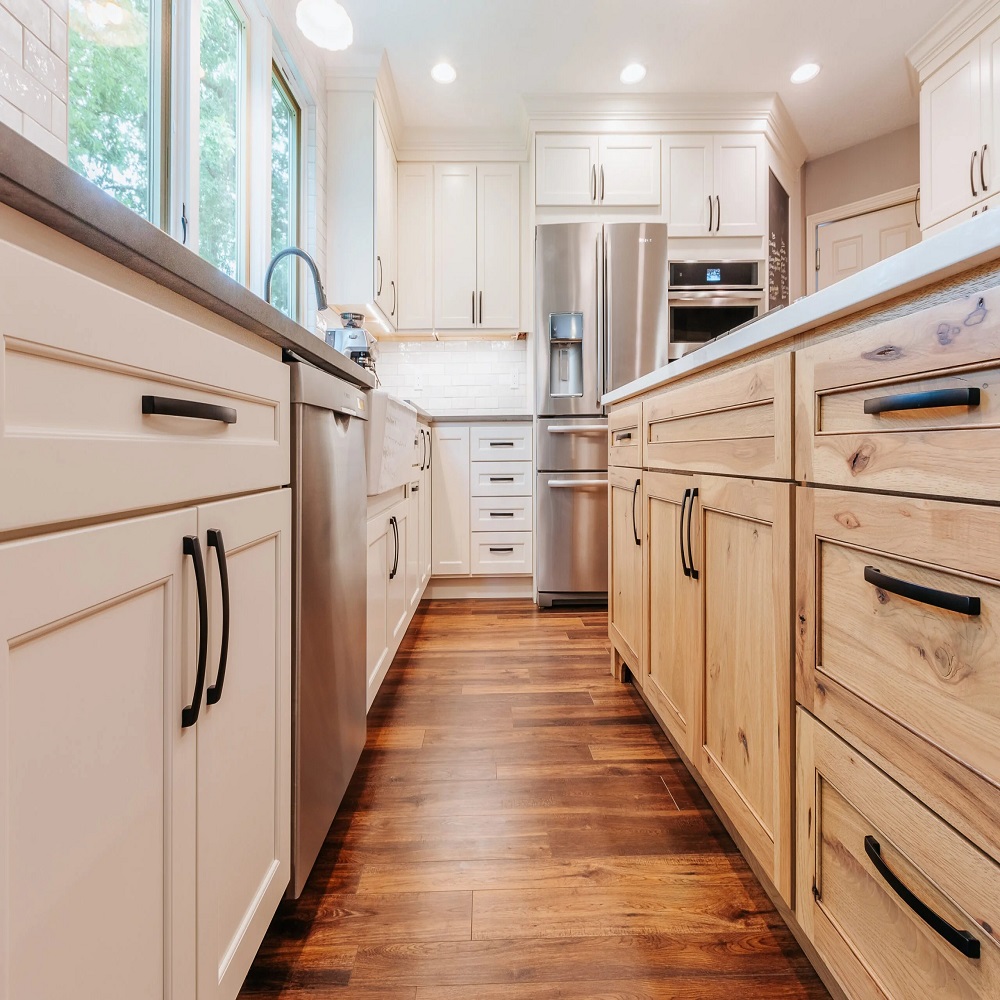
Birch Painted Cabinets: A Popular Option for Neutral Tones
When it comes to painted cabinets, birch is a popular choice. Its appeal lies in its neutral tones and ability to take paint well. Birch is a hardwood, which means it’s not just about looks—it’s also durable. The smooth, uniform surface of birch ensures that paint applies evenly, without grains or knots disrupting the finish. This results in a clean, professional look that complements various kitchen styles.
Homeowners often choose birch for its light, creamy colors. Over time, the wood gains a yellowish-red tint, adding character to your cabinetry. Birch’s subtle grain is perfect for a neutral backdrop, letting the paint color truly shine. For a clear, modern aesthetic, birch cabinets are a solid bet.
Moreover, birch is more than just its surface. It’s a living material that adapts to changes in temperature and humidity, meaning it will naturally expand and contract. This quality requires consideration, as it may lead to stress cracks in the paint over time. However, with proper care, birch painted cabinets can last many years, providing beauty and functionality.
In summary, birch painted cabinets stand out for their neutral palette and strong surface. They offer a great balance for homeowners who value both form and function in their kitchen design.
MDF Painted Cabinets: The Engineered Choice for Consistency
For a dependable finish, MDF painted cabinets stand out. Medium density fiberboard (MDF) offers uniformity. Its engineered nature means no knots or grain. So, paint sticks well and looks crisp. MDF handles temperature and humidity better than wood. This means less cracking and warping over time. Plus, it’s stable, resisting the usual expansion and contraction. MDF cabinets can match any paint color, fitting diverse styles. But, MDF isn’t as tough as solid wood. It can dent more easily. Yet, for many, its advantages make it the best wood for painted cabinets.
MDF also wins on cost. It’s cheaper than hardwoods like maple or oak. This makes it a smart pick for budget-minded remodels. Even with lightweight durability and smooth coverage, you save money. If your priority is a consistent, flawless paint job, consider MDF for your cabinets. It’s a practical, cost-effective choice that maintains a high-end look.
Poplar Painted Cabinets: Balancing Affordability and Paint-ability
When budget is key, poplar painted cabinets are a smart pick. Poplar, a softer hardwood, is known for its ease of use and affordability. This wood type has a smooth surface that helps ensure paint applies evenly. This leads to a beautiful finish on cabinetry. Its porosity is less ideal for staining, but with proper priming, poplar takes to paint very well.
Poplar’s lower cost does not mean sacrificing quality. Its smoothness makes it a go-to for many homeowners who desire painted cabinets without high expenses. It is less durable than maple or birch, meaning it may dent or ding with impact. Yet, its cost-effectiveness makes it an attractive option.
Applying additional sealer and protective layers can boost poplar’s resistance. This extra step will help defend against daily wear and tear. Poplar is great for those who want the look of painted cabinets and also want to keep costs down. Remember, with careful handling, poplar cabinets can offer lasting beauty in your home.
In short, for a balance between cost and the ability to hold paint, poplar stands out. It may need a bit more care, but the savings make it worth considering. It’s perfect for those looking for good quality on a budget.
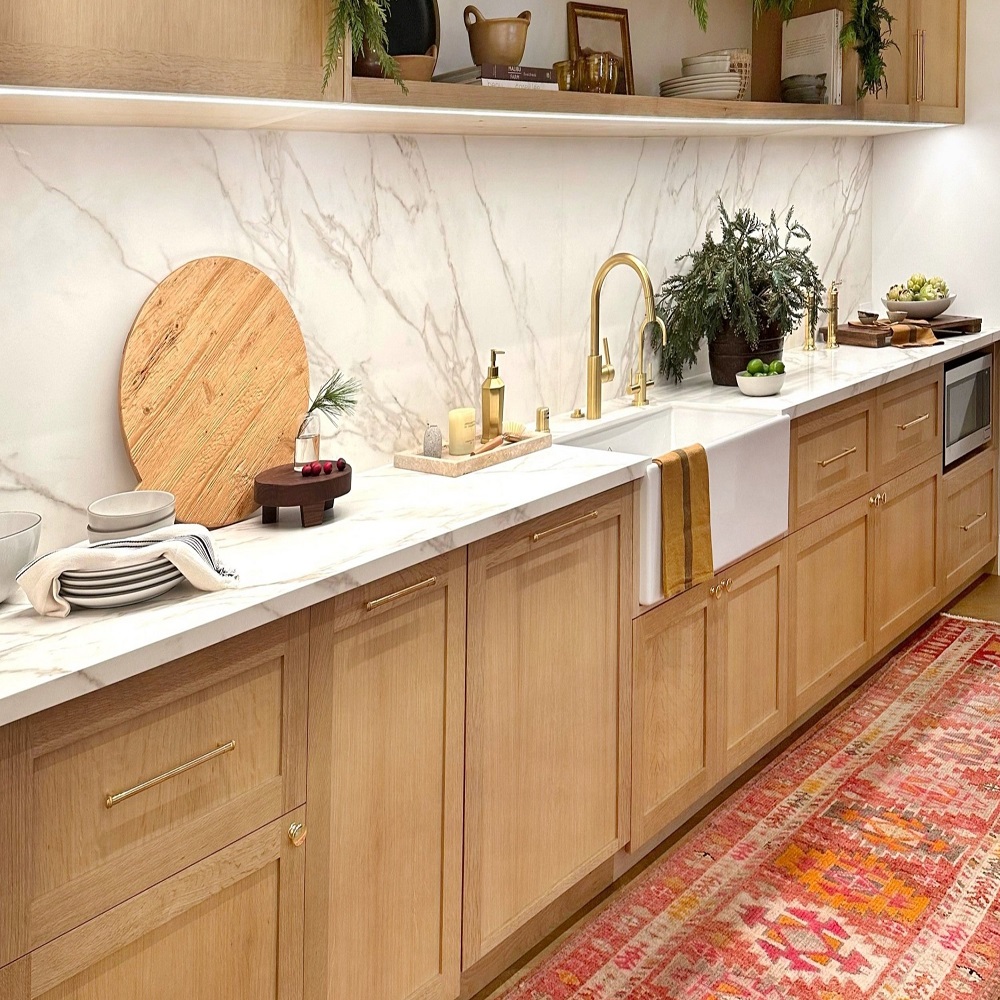
Oak Painted Cabinets: When Durability Meets Texture
Oak is not the typical choice for painted cabinets due to its textured grain. But, its durability makes it an interesting option. Oak wood paints well in the right hands. It offers a unique, textured look not found with smoother woods. This can add visual depth to cabinets. With a strong, long-lasting nature, oak can handle the rigors of a busy kitchen.
Oak’s grain is visible through paint, which some find appealing. It gives a sense of the wood’s natural beauty beneath the color. For those wishing to blend tradition with modernity, oak painted cabinets can strike that balance. Plus, since oak is such a hardwood, it resists dents and scratches better than softer woods like poplar.
Yet, oak does require careful prepping before painting. It needs sanding and a good primer to minimize grain texture. If you love the rustic charm but crave color, oak could be your wood. Just remember: It needs more upkeep to keep the texture from trapping dirt.
Above all, oak cabinets can last decades, even with a painted finish. They can be a wise investment for those after a durable and textured design in their home. If you’re up for the maintenance, oak’s toughness and unique grain can make your kitchen stand out.
The Debate on Softwoods: Pine and Alder in Painted Cabinetry
When it comes to painted cabinets, not all woods are equal. Softwoods like pine and alder spark debate among homeowners. These woods are different from hardwoods like maple or birch. They have their pros and cons when painted.
Pine is known for its knotty appearance. It gives a rustic look to cabinetry. Pine is affordable, making it a popular choice for those on a budget. However, it is a softer wood. This means it may dent more easily than hardwoods. If you choose pine for painted cabinets, extra care is needed. Protective finishes can help prevent wear and tear.
Alder is a smooth-textured softwood. It has a fine grain that can make for a smooth paint finish. It is not as hard as maple or birch. So, it might not last as long in a busy kitchen. Alder is often more affordable than hardwoods. It is a good middle ground for those wanting a wood that paints well without a high cost.
Both pine and alder require proper sealing before painting. This helps create a consistent finish. Knowing this can help you choose the best wood for painted cabinets in your kitchen. Each wood offers a balance between cost, look, and durability.
Choosing the Right Wood: Factors to Consider for Longevity and Aesthetics
When picking the best wood for painted cabinets, consider a few key factors. These influence your cabinets’ life and looks. Durability relates to how well wood stands up to use and time. Dense woods like maple and oak are tough and last longer. They resist scratches and keep a smooth finish for years.
Grain is the wood’s natural pattern. Fine-grained woods like maple and birch are best for paint. They offer a smooth canvas for an even coat. Avoid open-grained woods like oak, unless you want added texture.
The wood’s color can affect the paint tone. Lighter woods like birch can brighten paint shades. Heavier woods might need extra coats for true color.
Finally, think about the wood’s response to changes in environment. Woods that handle humidity and temperature shifts well are a smart choice. MDF, an engineered option, excels here with minimal movement.
In short, pick a wood that’s hard, has a fine grain, matches your color scheme, and stays stable. It helps keep your painted cabinets both beautiful and long-lasting.
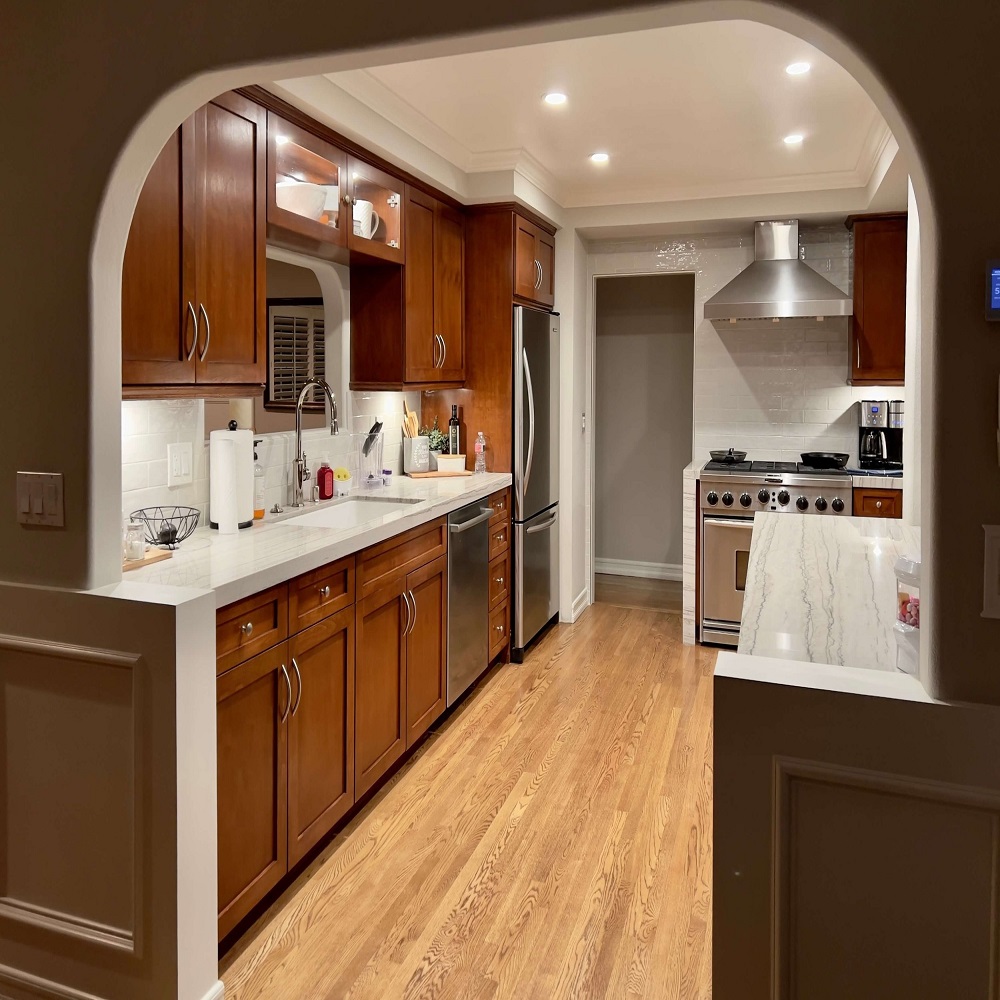
Conclusion: Investing in Quality for Timeless Painted Cabinetry
When selecting the best wood for painted cabinets, quality is crucial. High-quality woods like maple and birch offer smooth surfaces, perfect for a polished look. MDF, while engineered, guarantees a consistent and stable finish. These options promise longevity and enduring style for your kitchen.
Choosing woods such as poplar and oak can balance costs with the need for durability. Poplar, though less durable than hardwoods, can be cost-effective. Oak, with proper prep, can add character and texture.
Remember, painted cabinetry is about more than just surface appeal. The right wood choice stands up to daily use and environmental changes. It maintains its look without frequent touch-ups. It reflects your style and meets functional needs.
Investing in quality woods for painted cabinets ensures they remain timeless. Your kitchen transforms with beautiful colors, while the wood underneath works hard for years. It’s a smart, long-term investment in your home’s value and charm.
In summary, prioritize woods that combine smoothness for painting, hardness for durability, and stability against environmental shifts. A wise choice will ensure your kitchen remains as appealing tomorrow as it is today.
